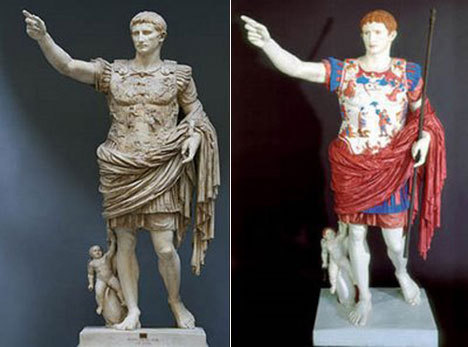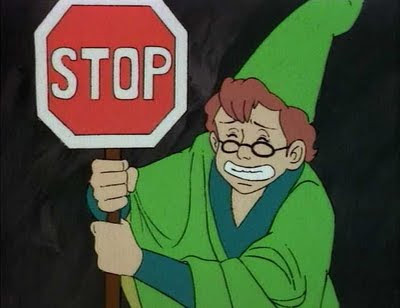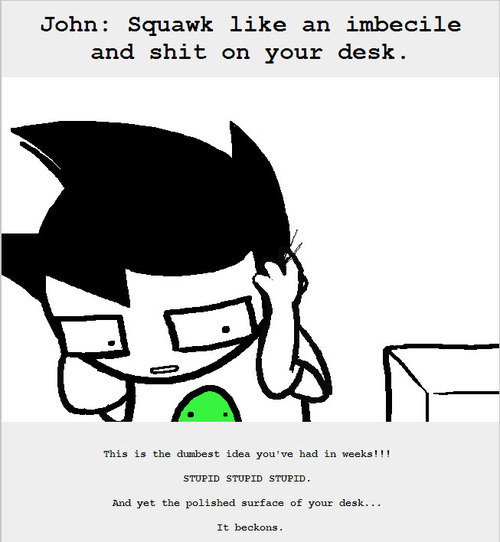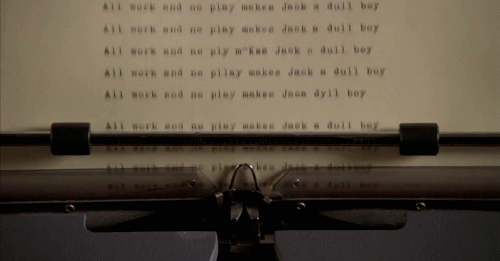Question: Is it possible to have armor that only serves as aesthetic quality versus functional quality only serve as that? Such as ceremonial armor or ancestral armor.
Of course. A lot of the armor that is on display in museums and owned by private collectors (and hence shown in books) was purely ornate and never intended to be worn into battle. After all, not setting foot on a battlefield does help improve the chances of your armor not being destroyed.
Prior to firearms, crossbows and other innovations making heavy armor redundant, it was commonplace for rich leaders who didn’t actually set foot on the battlefield to decorate their armor. Roman Emperors in particular seemed fond of looking absolutely fabulous in armor.

Even after heavy armor disappeared off the battlefield, many well-to-do had purely ornate suits made to try to capture the image of great heroes of years gone by. (This, and jousting armor intended only for sporting events, is part of where we get the myths of knights going to war in outfits they could barely move, let along fight in)
Ancestral armor was not really a thing in most places because generally a memorable suit of armor was part of an individual’s identity. A noble’s armor were also unlikely to fit their heirs – outside of Disney movies few families have identical measurements from generation to generation. Finally there was the issue that armor adapted as weapons did – wearing the previous generation’s armor exposed you to the current generation’s weapons.

The armor above was made for Sigismund II Augustus, the then King of Poland (who it seems probably never set foot on a battlefield) – and was one of twenty private armors owned by him at the time of his death. It would not have been unusual for a noble wearing such as suit in a parade to accessorize with a sash and/or long cape.
The important part about purely ornate armor is that it looks like armor – just with decorations that go beyond being practical. They still reflect the core armor values of the era but they’re just over decorated*, questionable accessorized and may have reductions made to facilitate their non-combat use (such as no gauntlets or arm protection if it’s for wearing to dinners and parties).
– wincenworks
* I say “over decorated” because there are some surprisingly heavily decorated suits of armor intended for real battles.
‘political correctness kills creativity’ if you can’t create something without furthering the oppression of minorities, you aren’t a very creative person.
Exactly. It is funny how people say this and don’t realize the irony. As in, if you cannot visualize people different from you without using the same old stereotypes, you can’t exactly say you were the paragon of creativity can you?
RE: the insistence that when we ask for costume designs to stop recycling the tired skimpy armor tropes we’re somehow hurting the very idea of creativity.
Fun fact: adhering limitations to a project (like, I dunno, striving to not hurt feelings of large part of the population) actually helps to come up with something way more original than sticking to tropes that are offensive towards lots of potential fans.
~Ozzie
Invariably whenever someone claims that “political correctness” is killing creativity – it showcases a real lack of effort on their part. Even politically incorrect comedians like John Cleese will stress that you can’t expect your first idea to be your greatest idea, you have to refine it and be willing to let it go if it can’t be saved.
If you have an idea that you think is great, but you can’t use it because it’s “politically incorrect” then three possibilities exist:
- The core idea is great however the way you envisioned it is problematic – so you need to rework it until you have the core without the terrible stuff.
- The core idea is actually terrible, but some other aspect of it is good so what you want to do is ditch the core idea but keep the good aspect for another idea (or make it the core idea).
- The whole idea if fundamentally terrible and you need to examine why you thought of it in the first place to help you grow as a person and avoid problematic ideas like it cloud up your brain storming in future.
Regardless of which it is, it’s basically an opportunity to help you improve your creativity and yourself. Passing up on this opportunity just means you’re taking one step towards being more like many, many problematic creators of the past.
So why be an imitation of someone else when you can be a pioneer? Because plenty of professionals are calling for people to drop the use of harmful stereotypes and get creative instead.
– wincenworks
Why is “no helmet” in the bingo, I fo mock battles all the time and have little need of a helmet even though I own 3.

There is an extremely critical difference that you need to remember between mock battles and real battles.
People in mock battles are not only not trying to kill you, they’re actually take deliberate steps to make sure you aren’t injured!
In a real battle your head is particularly vulnerable and a high priority to protect for a variety of reasons:
- Head wounds bleed really strongly, between blood in your eyes and problems from blood loss – a relatively light cut can be a death sentence
- Your head is relatively unprotected compared to your other vital regions. Even a glancing blow can do serious damage to organs like your eyes, nose, etc
- Because it is on top of your body, your head is vulnerable to attacks from pretty much every angle except directly below it so it has more ways to get hurt
- As well as being the end point for the common carotid arteries, your head also contains a vital organ known as the brain. Serious harm to this organ can result in life long crippling and/or death.
Not wearing a helmet as part of artistic license is often employed with characters who are either not normally in armor, or who need to be recognizable as unique among many armored figures.
However it is also often employed with female characters because of the idea that unless a character has long flowing locks, warm kissable lips and a dainty little nose clearly on display – men won’t be able to tell the character is female (and hence they’re supposed to be attracted to her).
Basically prioritizing the sexualization and objectification of female characters over portraying them as competent, interesting people, etc.

– wincenworks
I wasn’t keeping up with E3 but the Valkyrie from the Gauntlet game actually has practical armor???
Well, I’m a little disappointed that they seem to have gone with three men and a token woman approach (not that I had high hopes for Gauntlet – one of the original “kill everything that moves or doesn’t move” games), but looking at the most revealing outfit they’re showcasing for her:

I can’t stay mad at her… look at her!

– wincenworks
Hey I want to genuinely ask why don’t you make your own story/game with the design of how you want females to be represented? I know what you have to say about it in your Rhetroic Bingo but there are ways to get around that; Like making a webcomic of said story to gain fans then make a kickstarter for a game or book I mean it worked for Andrew Hussie’s Homestuck series, Or you could gather a group of like minded individuals to collaborate on a game/movie/comic.

Actually we’re both working on our own projects (they’re at a stage of completion where we’re comfortable sharing, and neither are the like minded people we’re working with (so there will be no further details forthcoming at this time).
Also, believe it or not: Some of the people involved in related blogs actually work in industries such as video games.
Saying that it “worked for Andrew Hussie’s Homestuck series” is as absurd, it’s like suggesting that someone’s who broke should just become a millionaire by building a web site like Google (it worked for Larry Page and Sergey Brin!)
Homestuck is a particularly bad example because it:
- Didn’t really challenge the status quo at all, it was just a new absurdist comic that wanted to tell a story and entertain
- Has a large and very enthusiastic fanbase, but has more or less no influence outside of that fanbase. It’s very successful for a web comic, but that success doesn’t mean it’s influential in the grand scheme of things (or even in web comics)
- Employs an economical style that works fine for the stories in Homestuck but is not necessarily even faintly compatible with other styles and stories.

Making a production that showcases women in sensible armor would pretty much require a higher standard of visual quality than something that’s intended to look like a scribble done in MS Paint. So even with a web comic at a lot of hours in image creation.
More accessible and larger markets (which means more competition) products like animated features/movies/etc require even more effort and expertise. Video games would require more skills and time again.
That’s not to say things like Kickstarter and Steam’s Greenlit aren’t fantastic and making the market more accessible but it’s insulting to creators of these products to downplay the work involved and pretend just anyone can do it (particularly with their other responsibilities and how much work is involved).

Even if Ozzie and I did somehow stumble across the time, money and connections to make a modest game (since video games are currently the biggest market) – say on par with Gone Home, here’s what we could look forward to:
- Sales would be a small fraction of those by mainstream publishers – even a lambasted product like Kingdoms of Amalur: Reckoning gets more sales (and hence market influence) than a critically acclaimed indy production
- If the game doesn’t do well, for any reason – there will be a general backlash saying that it’s proof that the public doesn’t want well armored heroines
- If the game does do well, for any reason – there will be a general backlash from people claiming that it’s only got sales due to political reasons and not because of the game (for more information, read the reviews on Gone Home’s Steam Store page – for extra laughs compare them to the reviews on The Stanley Parable a game that employs almost identical mechanics but doesn’t challenge people’s perceptions of the world around them per se)
- While it may provide some influence in mainstream gaming, it is likely that the industry would in general mostly overlook. Lots of people want to copy Minecraft – but almost nobody talks about its gender ambiguity.
I mean we already have big names in industry like David Gaider promoting the importance of inclusion, Mark Rubin – the executive producer of Call of Duty (the iconic game of brodudes) recently announced they’ll be including female playable characters to recognize the female fanbase they already have around the same time that Ubisoft announced that making female characters in their next Assassin’s Creed game would be too much work.
The idea that an independent production is somehow going to overpower the influence of the mainstream media is, frankly, ridiculous (unless you’re Batman). None of that is to say there aren’t things like games or artworks out there that are made for political reasons or with such goals – but they’re made by people who want to make the things.
History has already shown that if you make a web comic just because you want to make lots of money off it – you’re going to be disappointed. Likewise if you make a web comic, animation or game just because you want the world to change their perceptions of other people. Usually even political projects are less about expecting to change people, and more about the need to express something important.
So to summarize the main points:
1. Not everyone who is critical of a market should be expected to produce for that market. Every modern marketplace needs more customers than suppliers so it makes sense to leave the production up to people with the motivation and skills to do so.
2. If 50% of the population can see themselves well represented by going to, say, a game store, but the other 50% have to spend years building a game for themselves – that is not equality.
Criticism in the marketplace is important, it leads to more pressure on the experts to make better products and refine their priorities.

– wincenworks





